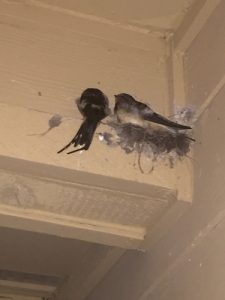We identified this group of birds as Cedar Waxwings on our nature walk with Dr. Belaire. However, I did not take the picture on the walk, I took this photo by the Apartment complex as it was a much closer angle and much easier to see their yellow underbellies, a key feature of the Cedar Waxwings. You can also identify these birds by what I like to call their “mini mohawks,” otherwise known as their crests. They can be found year round traveling in flocks similar to how they are all together in this tree!
Source: https://www.allaboutbirds.org/guide/Cedar_Waxwing/id
Observation: http://www.inaturalist.org/observations/5976006









